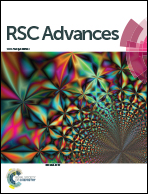Inhomogeneous swelling and mechanical properties of polystyrene bead-filled poly(acrylic acid) hydrogels
Abstract
Position-dependent swelling rates, storage moduli (G′), and damping factors (G′′/G′) of polystyrene bead-filled poly(acrylic acid) hydrogels (FPAGs) were investigated. FPAGs were synthesized via free radical crosslinking copolymerization of acrylic acid with methylenebisacrylamide (MBAAm) weight fractions of 0.005 (FPAG5), 0.01 (FPAG10), and 0.02 (FPAG20), in the presence of a polystyrene (PS) microemulsion. To study the position-dependency, two middle parts and two edge parts were cut out of a sample, and swelling and mechanical properties of those specimens were measured. The results showed that swelling rates in the middle (M) and edge (S) were similar in the first 2 h, but G′ was decreased 1.8–2.5 times faster in S than in M. In an unfilled-poly(acrylic acid) hydrogel prepared with a MBAAm weight fraction of 0.01 (PAG10), G′ was decreased 1.4 times faster in S than in M, but swelling rates were similar in both parts. These results suggested the crosslinking density was higher in M than in S, the incorporation of PS (36% volume fraction) increased the inhomogeneity, and G′ about 40 times, and generated a two-fold increase in damping factor at 15% swelling when comparing FPAG10 and PAG10.


 Please wait while we load your content...
Please wait while we load your content...